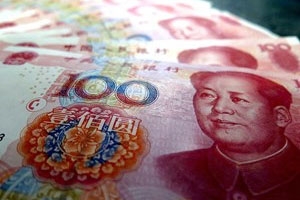
By Fred Hu and Jonathan Woetzel*


China has an advantage that other countries in today’s troubled global economy lack: a clear path forward.
If China carries out a sustained, comprehensive effort to raise productivity, it can address its growth challenges, reduce the risks of financial crisis, and complete its transition to a consumption-driven, high-income economy with a large and affluent middle class. If it does, its annual GDP could be an estimated $5 trillion larger by 2030 than it is likely to be if policymakers continue to pursue investment-led growth.
And, in fact, China may have little choice. The traditional drivers of its economy – a vast pool of surplus labour and massive investments in infrastructure, housing, and industrial capacity – are becoming exhausted. The working-age population has peaked, urbanisation is slowing, and the steel and cement industries are suffering from overcapacity. Returns on capital have declined, so China cannot rely on investment spending to generate sufficient growth.
Fortunately, however, China has substantial room for gains in labour productivity, which is only 10-30% of the level in advanced economies. When the McKinsey Global Institute analysed more than 2,000 Chinese companies in industries ranging from coal and steel to auto manufacturing and retail, it found opportunities to raise productivity by 20-100% by 2030.
Consider China’s service sector. Though the sector has grown rapidly and now accounts for about 50% of GDP, low-value-added businesses still dominate. On average, service businesses in China are just 15-30% as productive as their counterparts in OECD countries. In addition to streamlining existing operations (for example, by introducing self-checkout systems in retail businesses), China has opportunities to complement its manufacturing sector with high-value-added business services in areas such as design, accounting, marketing, and logistics.
In manufacturing itself, China can do more to automate its factories. China is the world’s largest purchaser of robots, but it still has only 36 robots per 10,000 workers, compared with 164 in the United States and 478 in Korea. Chinese companies have already shown that they can mix automated and manual assembly lines. They also can raise productivity by rationalising operations and improving energy efficiency, bringing their performance closer to that of their global peers.
Chinese companies are major producers in a broad range of industries, but they have yet to take over the steps that add the most value. When it comes to semiconductors, for example, Chinese companies mostly serve as foundries for companies that design and sell chips (and, in doing so, capture the most value). Similarly, generics account for 90% of Chinese pharmaceutical sales.
China can support innovation in many ways, including by developing research-and-development clusters and helping inventors reap rewards through stronger intellectual property protection and reforms to the process of bringing firms to market. In the pharmaceutical industry, for example, a crop of innovative companies is developing a distinctively Chinese approach to drug discovery: massive scale and low-cost technical talent. These firms may be on their way to cracking the more lucrative business of brand-name drugs.
Some of China’s biggest productivity opportunities are in sectors suffering from overcapacity. Over the past decade, overcapacity has reduced annual returns on capital in the country’s coal and steel industries from 17% to 6%. The Chinese auto industry is capable of building 40 million cars per year for a market that currently consumes 26 million. Restructuring industries like steel, by letting uncompetitive players fail and encouraging consolidation, could raise productivity dramatically without compromising the ability to meet demand.
As companies move into higher-value-added activities, millions of better-paying jobs will be created, which should raise household incomes and move more Chinese into the middle class. In the first two or three years, however, before the income boost from rising productivity kicks in, the massive reallocation of resources could result in considerable pain and dislocation. Millions of low-skill workers will need to be retrained and redeployed, and GDP may grow more slowly than expected, before assuming a moderately rapid, steady pace through 2030.
The alternative is a continuation of the status quo, with poorly performing companies propped up in the name of job preservation and social stability – even as they raise risks for Chinese banks. The country would use its resources unproductively, and its firms would become less globally competitive.
China’s history provides reason to believe that its leaders will make the right choice. In the 1990s, ailing state industries and the Asian financial crisis risked dragging down the country’s economy. But, rather than attempting to use fiscal and monetary stimulus to provide a short-term economic boost, the government carried out wrenching reforms and put the country on the path to two decades of awe-inspiring, double-digit growth.
Today, China faces a similar decision. It can settle for temporary fixes that will ultimately make the problem worse. Or it can seize the opportunity and press ahead with reforms that will boost productivity and create economic prosperity for years to come.
Fred Hu is Founder and Chairman of Primavera Capital Group. Jonathan Woetzel is a director of the McKinsey Global Institute.
This content is © Project Syndicate, 2016, and is here with permission.
2 Comments
Massive opportunity and everyone all ears and wanting a seat at the top table.
From a year ago, almost to the day. Opps.
http://m.nzherald.co.nz/nz/news/article.cfm?c_id=1&objectid=11434880
Given con,versations last few days.
Oh to be a fly on the wall.
Gotta laugh. Let's hope the Chinese don't demand we settle dairy product sales in Yuan, when our banks really need USD to swap into NZD to fund an asset base greater than domestic deposits. Read more
We welcome your comments below. If you are not already registered, please register to comment.
Remember we welcome robust, respectful and insightful debate. We don't welcome abusive or defamatory comments and will de-register those repeatedly making such comments. Our current comment policy is here.